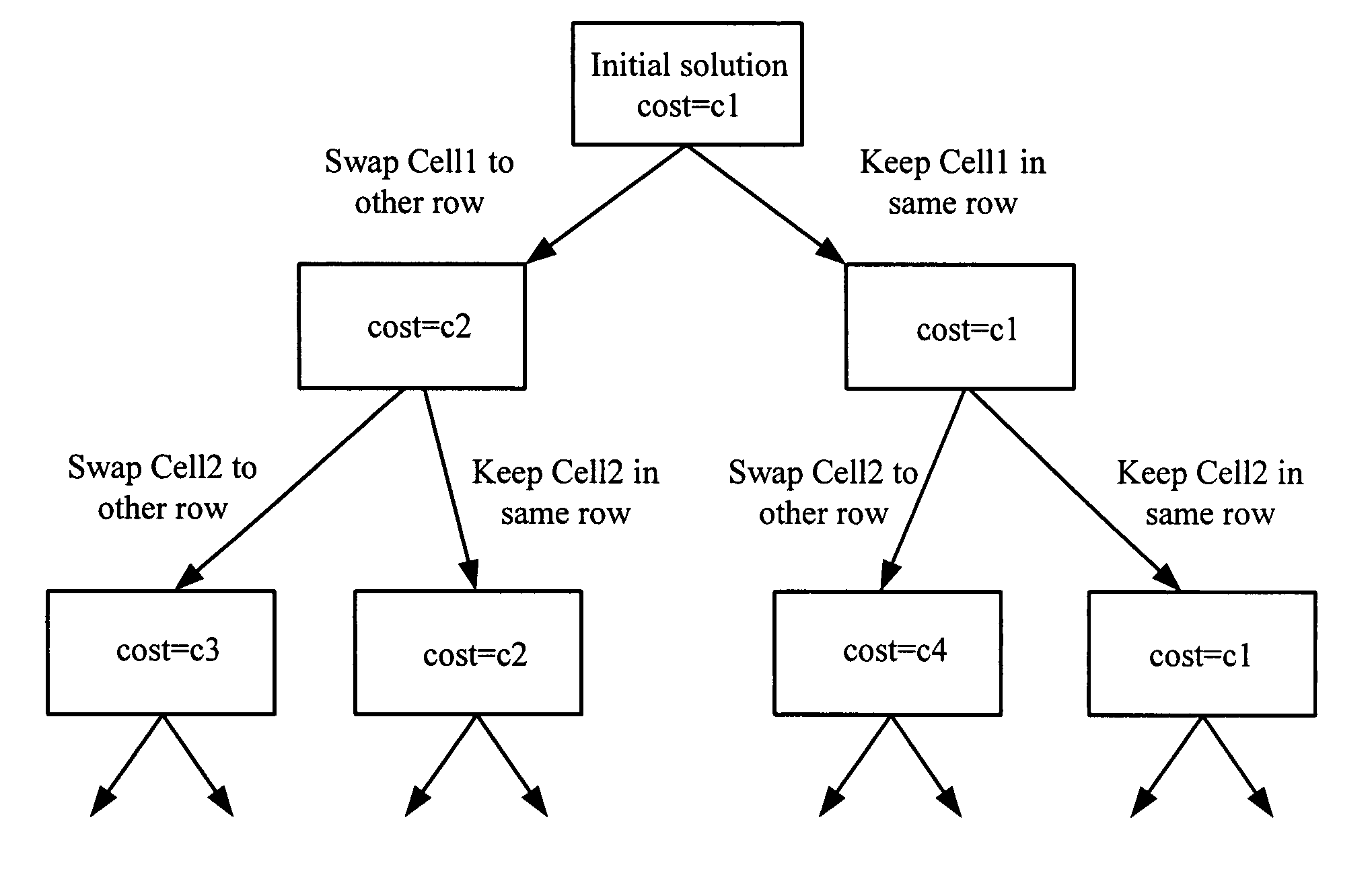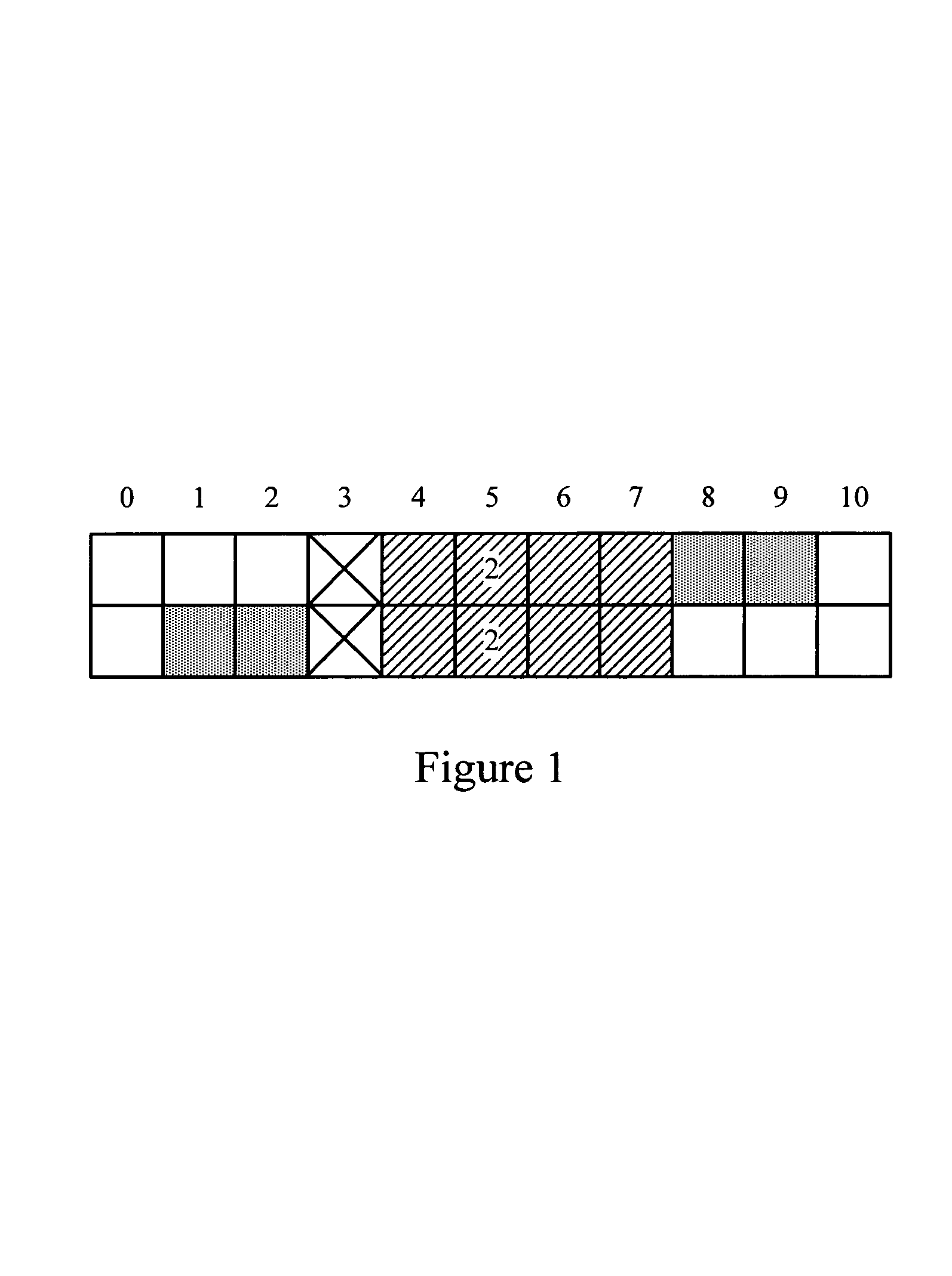Detailed placer for optimizing high density cell placement in a linear runtime
a linear runtime and cell placement technology, applied in the field of electronic design automation, can solve the problems of increasing the complexity of modem electronic circuits, the design is much too large for circuit designers or even designers to effectively manage manually, and the design is much too large for circuit designers or even designers to manage effectively. manual, and achieve the effect of optimizing cell placement, optimizing cell placement, and low density situations
- Summary
- Abstract
- Description
- Claims
- Application Information
AI Technical Summary
Benefits of technology
Problems solved by technology
Method used
Image
Examples
Embodiment Construction
[0040]An improved placement process is described. In the following description, for purposes of explanation, numerous specific details are set forth in order to provide a thorough understanding of the present invention. It will be obvious, however, to one skilled in the art that the present invention may be practiced without these specific details. In other instances, well-known structures and devices are shown in block diagram form in order to avoid obscuring the present invention.
[0041]When creating a layout for a given netlist, the present invention utilizes two phases: a first phase coarse placement process and a second phase detailed placement process. The first phase creates a placement using floating point numbers for the cell locations. This placement ignores may of the details, such as the exact site locations that the cells must map to, and generally creates a placement with a certain amount of overlapping cells. In the currently preferred embodiment of the present inventi...
PUM
 Login to View More
Login to View More Abstract
Description
Claims
Application Information
 Login to View More
Login to View More - R&D
- Intellectual Property
- Life Sciences
- Materials
- Tech Scout
- Unparalleled Data Quality
- Higher Quality Content
- 60% Fewer Hallucinations
Browse by: Latest US Patents, China's latest patents, Technical Efficacy Thesaurus, Application Domain, Technology Topic, Popular Technical Reports.
© 2025 PatSnap. All rights reserved.Legal|Privacy policy|Modern Slavery Act Transparency Statement|Sitemap|About US| Contact US: help@patsnap.com



